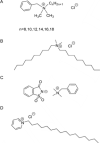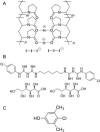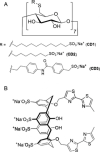Sanitizing agents for virus inactivation and disinfection
- PMID: 34766164
- PMCID: PMC7267133
- DOI: 10.1002/viw2.16
Sanitizing agents for virus inactivation and disinfection
Abstract
Viral epidemics develop from the emergence of new variants of infectious viruses. The lack of effective antiviral treatments for the new viral infections coupled with rapid community spread of the infection often result in major human and financial loss. Viral transmissions can occur via close human-to-human contact or via contacting a contaminated surface. Thus, careful disinfection or sanitization is essential to curtail viral spread. A myriad of disinfectants/sanitizing agents/biocidal agents are available that can inactivate viruses, but their effectiveness is dependent upon many factors such as concentration of agent, reaction time, temperature, and organic load. In this work, we review common commercially available disinfectants agents available on the market and evaluate their effectiveness under various application conditions. In addition, this work also seeks to debunk common myths about viral inactivation and highlight new exciting advances in the development of potential sanitizing agents.
Keywords: disinfectant; sanitizer; surface; virucidal; virus.
© 2020 The Authors. VIEW published by John Wiley & Sons Australia, Ltd and Shanghai Fuji Technology Consulting Co., Ltd, authorized by Professional Community of Experimental Medicine, National Association of Health Industry and Enterprise Management (PCEM).
Conflict of interest statement
The authors declare no conflict of interest.
Figures











References
-
- A. Zafar, Cyrus Talati, Errol Graham, John Panzer and Seynabou Sakho in 2014–2015 West Africa Ebola Crisis: Impact Update, World Bank Group , 2016. https://www.worldbank.org/en/topic/macroeconomics/publication/2014-2015-...
-
- Christophersen O. A., Haug A., Microb. Ecol. Health Dis. 2006, 18, 113.
-
- Situation Report 75 (04 April 2020) in Coronavirus disease 2019 (COVID‐19), World Health Organisation (WHO), 2020. https://www.who.int/docs/default-source/coronaviruse/situation-reports/2...
Publication types
LinkOut - more resources
Full Text Sources
Other Literature Sources
